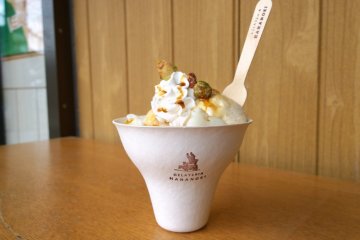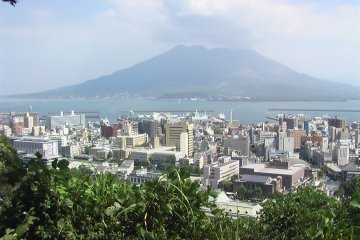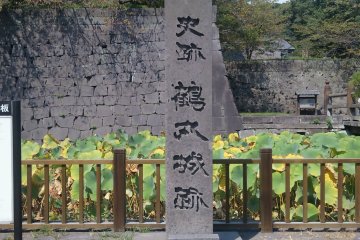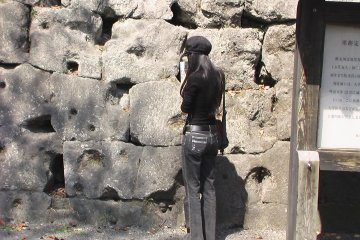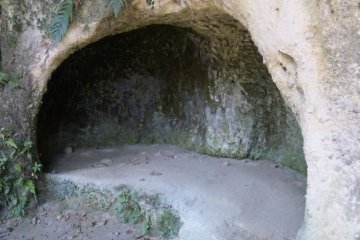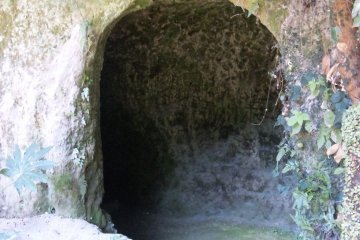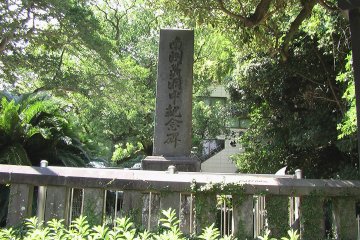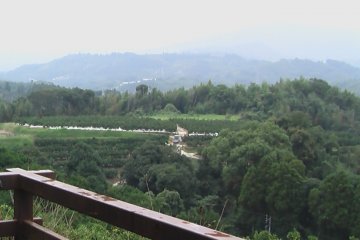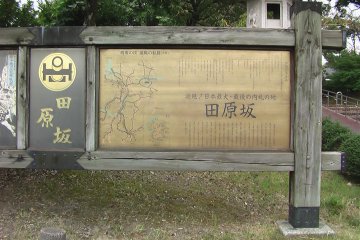There is one man that the people of Kagoshima never cease to love: Saigo Takamori, who was the leader of the Satsuma Rebellion.
The Satsuma Rebellion was the last civil war in Japan, and this may be the reason why Saigo has been dubbed 'The Last Samurai': The last samurai who fought and died as a samurai. He is, of course, the model for 'Katsumoto', the main character played by Ken Watanabe in the Tom Cruise Hollywood movie The Last Samurai (2003).
Once I had an opportunity to ask one of my friends who grew up in Kagoshima, "Who is more popular in Kagoshima, Saigo Takamori or Okubo Toshimichi?" She readily answered, "Of course Saigo-san is!" she continued, "Saigo-san is VERY popular, everybody loves him, but I've never heard of anybody who loves Okubo-san."
Saigo Takamori and Okubo Toshimichi
Saigo Takamori and Okubo Toshimichi were both prominent statesmen in the Meiji Era who helped lead the Meiji Restoration (1868). It could be an exaggeration to say this, but it was the two of them, together with other samurai like Katsura Kogoro, who were the driving force behind the overthrow of the Tokugawa Shogunate and who created the new Meiji government. Yet later they parted ways. Saigo led the Satsuma Rebellion, becoming the enemy of the Emperor, while Okubo, still the leader of the Meiji new government, led the Emperor's army to defeat Saigo's rebel troops. In the end Saigo was defeated by his best friend Okubo, committed Seppuku(hara-kiri) and died in Shiroyama, Kagoshima.
From the government's point of view, Saigo was a rebel, and a traitor, yet a statue of him can be found not only in Kagoshima, his hometown, but also in Ueno Park, Tokyo – one that the Imperial Household Agency supported with a donation. In 1898, 21 years after Saigo died, this statue was unveiled in Ueno Park, and many prominent statesmen of the time, including then Prime Minister Yamagata Aritomo, many government officials, and British minister Sir Ernest Mason Satow attended the ceremony. They were all Saigo's ex-colleagues, subordinates, and dear friends.
Saigo's story
There is a reason why the Meiji government didn't, and couldn't treat Saigo as an out-and-out traitor. Here's a roughly abbreviated overview. In the first place, the Meiji Restoration was triggered by the appearance of Commodore Matthew Perry's four ships in Edo (Tokyo) Bay in 1853. Japanese people, mainly samurais, were enraged by thei high-handed way Japan was being forced to open her doors to the world and they screamed in rage, "Expel the barbarians!" Samurai of Satsuma (present-day Kagoshima) and Chosu (present-day Yamaguchi) came onto the scene. Imagine, it is 1853.
Satsuma and Choshu are the two most powerful hans (domains) which sided with the Western Army in Japan (Toyotomi clan side) against the Eastern Army (Tokugawa side) in the Battle of Sekigahara (1600).
They were defeated by Tokugawa, and were then severely punished for it. At the time, Satsuma was the biggest and strongest clan which ruled over the Kyushu area, and Choshu was the same in the Chugoku area. After the Battle of Sekigahara, the losers' fiefdoms were forfeited of course, and Satsuma was crammed into a parcel of land as small as present day Kagoshima prefecture, and Choshu was also pushed into present-day Yamaguchi prefecture. It was a modern-day forced-downsizing, and when any group, army or company is downsized, they can't afford to keep their employees. Many samurai lost their jobs in both Satsuma and Choshu, and some of them had to become peasants. For 265 long years, as long as the Tokugawa (Edo) Era continued, samurais in Satsuma and Choshu, along with their lords, held an unforgiving grudge against Tokugawa. Choshu samurai, for instance, slept with their feet toward the east. For 265 long years they slept with their feet kicking Tokugawa...What a show of disgust!
The domains of these two once-powerful hans faced the sea. Utilizing a convenient location that was far away from Edo, they saved money earned by illegal seaborne trade, and by the end of the Edo Era they were fairly rich. When Commodore Perry's squadron triggered turbulence throughout Japan, they got off their feet, which had been kicking Tokugawa for 265 years, and while shouting, 'Expel barbarians!' to the outside world, their true enemy, the one they really wanted to expel was TOKUGAWA.
Meiji Government
Thus, the opposition group which mainly consisted of Satsuma and Choshu samurai, overthrew Tokugawa Shogunate and created the new Meiji Government. But most of the samurai who fought against Tokugawa didn't anticipate that the Samurai Era would end with the Tokugawa Shogunate. They expected that a Satsuma & Choshu allied Shogunate would replace the Tokugawa Shogunate, and then they would expel western enemies together. Only a few leaders including Saigo and Okubo understood that Japan had to open the country to the world and that Samurai Era had to end.
After the Meiji Revolution(Restoration), the Meiji government opened up Japan to western countries in order to acquire their advanced technology and knowledge to counter the western threat, and tried to modernize the country. Along with that, they abolished the Han system (traditional feudal domain system) and the class system, which means that the entire population of samurai, 7% of the population at the time, lost their jobs. Suppose it happened in present day Japan. If 9.1 million people suddenly lost their jobs at the same time without warning. And those samurai not only lost their jobs but also their positions in society, where they had been at the top of the hierarchical pyramid. They risked their lives, shed tears and blood and fought hard, and what they got was this. If YOU were a samurai, could you accept such a decision?
And Saigo Takamori played the role of a sacrificial lamb who took upon himself every resentment, grievance and rage of the samurai, especially the Satsuma (Kagoshima) samurai.
The Two Last Samurai
Saigo knew it was necessary to abolish the class system, as well as the aggrieved samurai, in order to modernize Japan. But he was opposed to the idea of rebel action. Yet he couldn't stop the enraged young samurai of Satsuma. He told them, "My life is in your hands." and shared his fate with them. He led 30,000 Satsuma troops, attacking first Kumamoto Castle, then fighting against 70,000 government troops in various places in Kyushu. His army suffered a heavy loss in the Battle of Tabaruzaka, and he returned to Kagoshima with the rest of his troops, now decreased to a few hundred, holed up in caves in Shiroyama. They fought to the end, and he killed himself by Seppuku (harakiri).
Okubo Toshimichi, who led the government army which terminated his best-friend Saigo Takamori, was assassinated a year later after Saigo's death in Shiroyama. When he was killed on the street, there was a letter from Saigo in his pocket. It is my humble thought that these two great men, who contributed to modernize Japan and lost their lives while doing so, were BOTH the last samurai.






